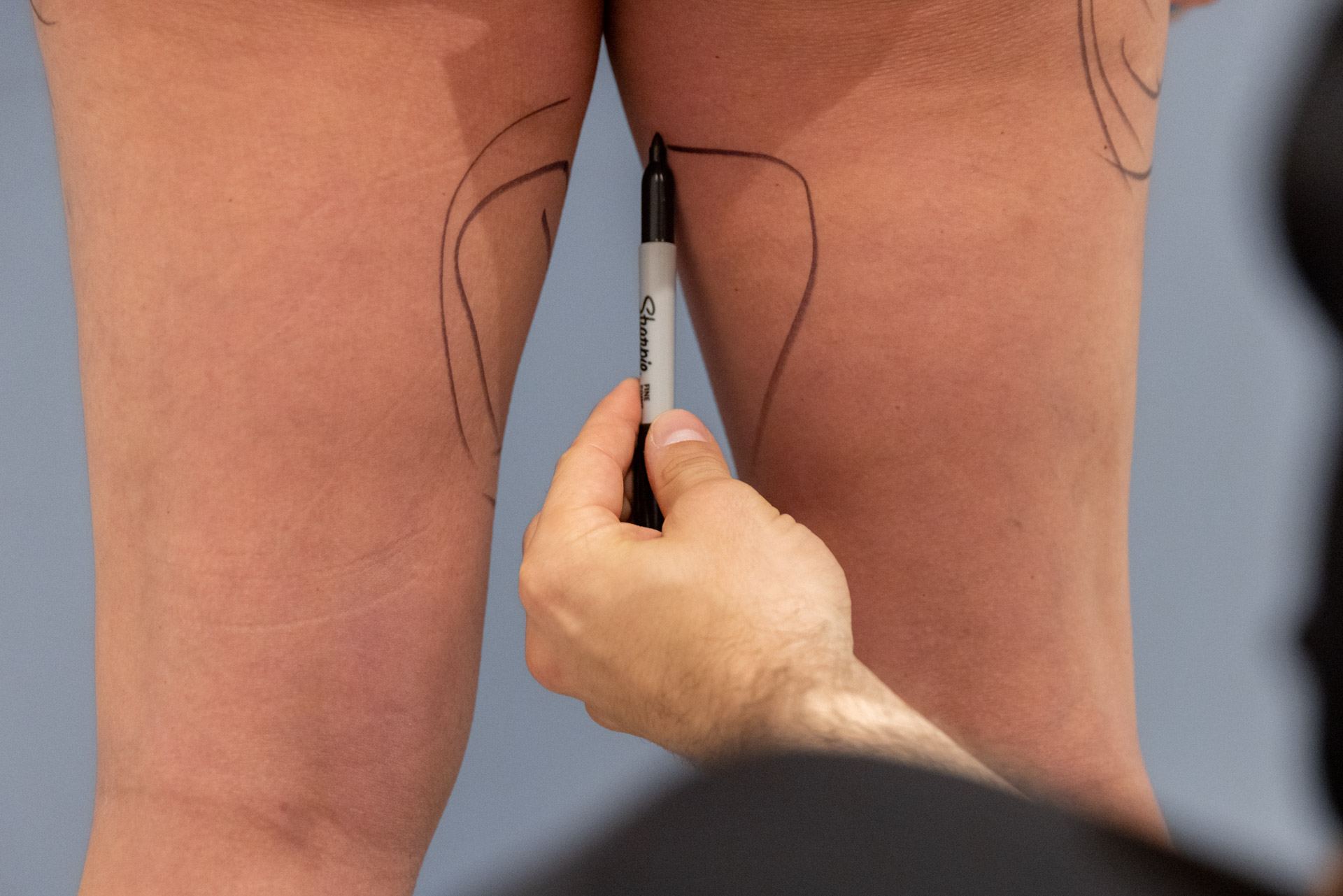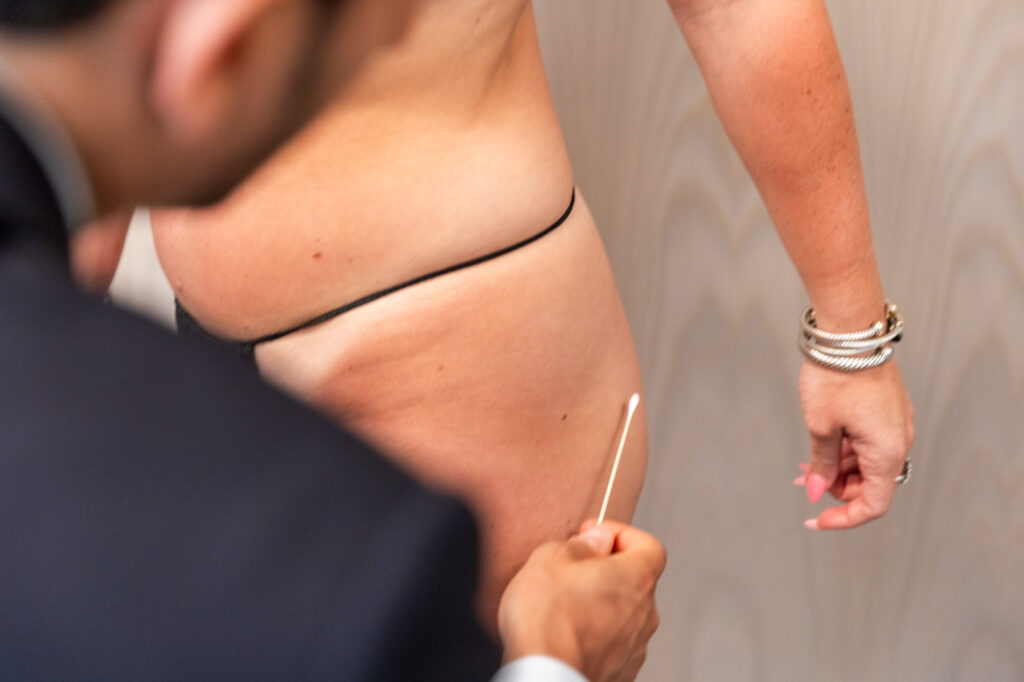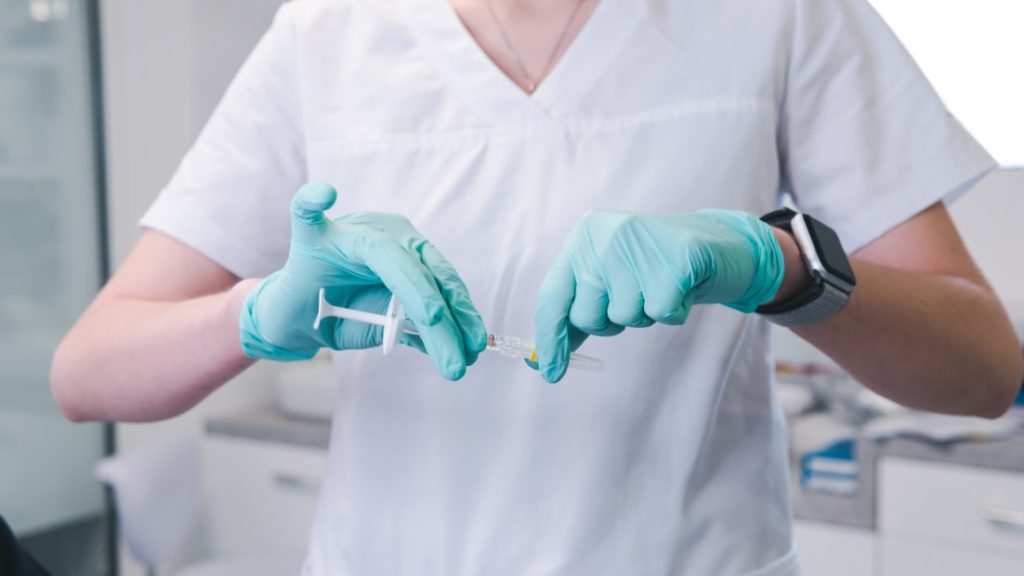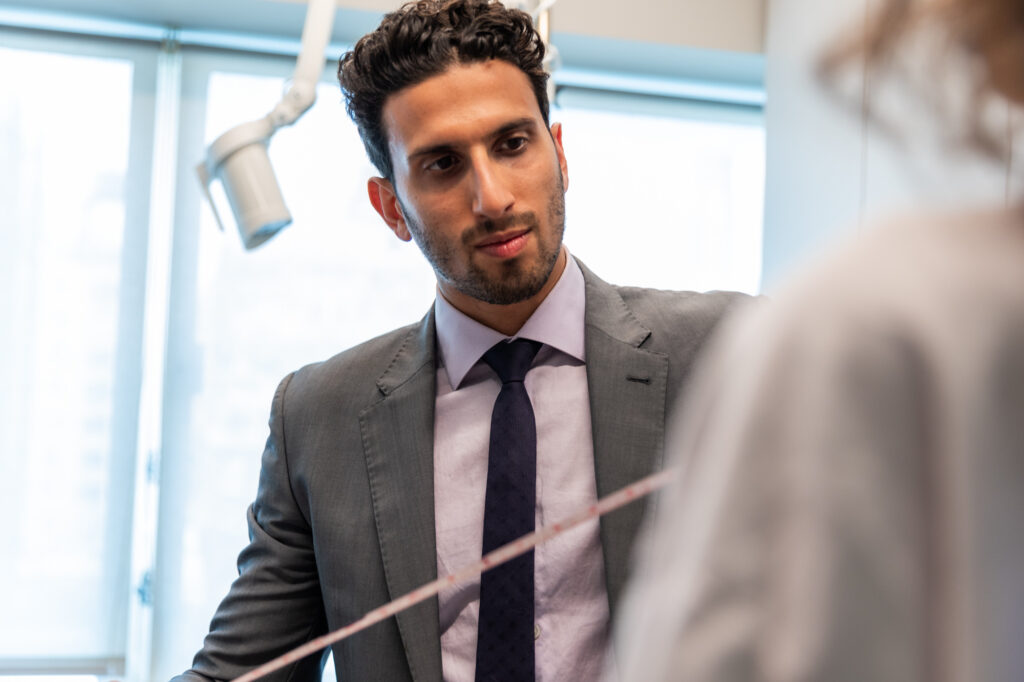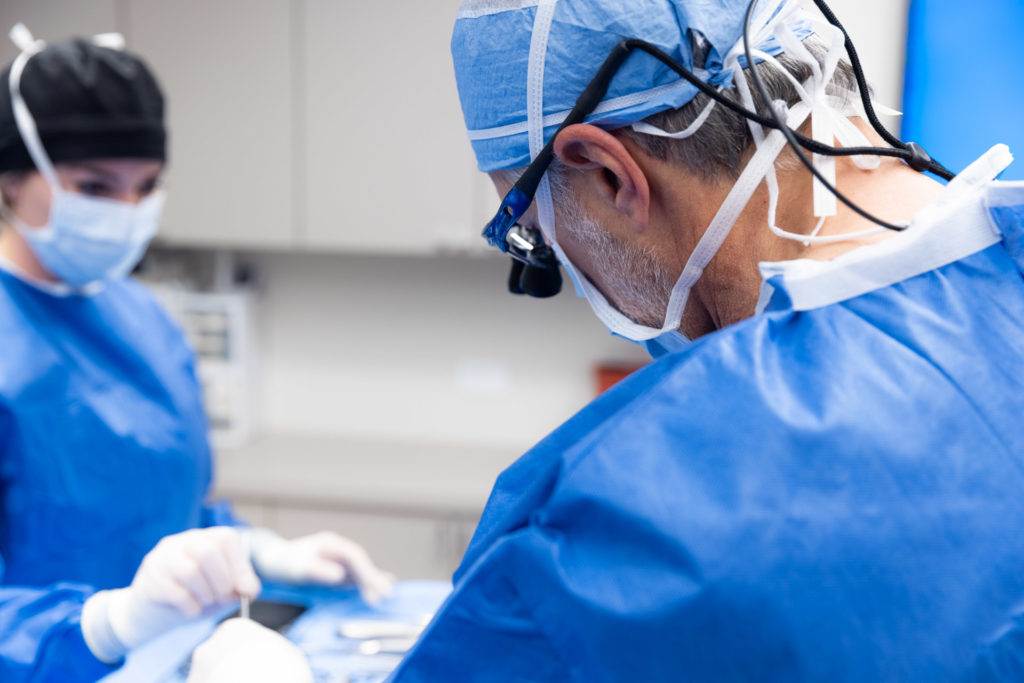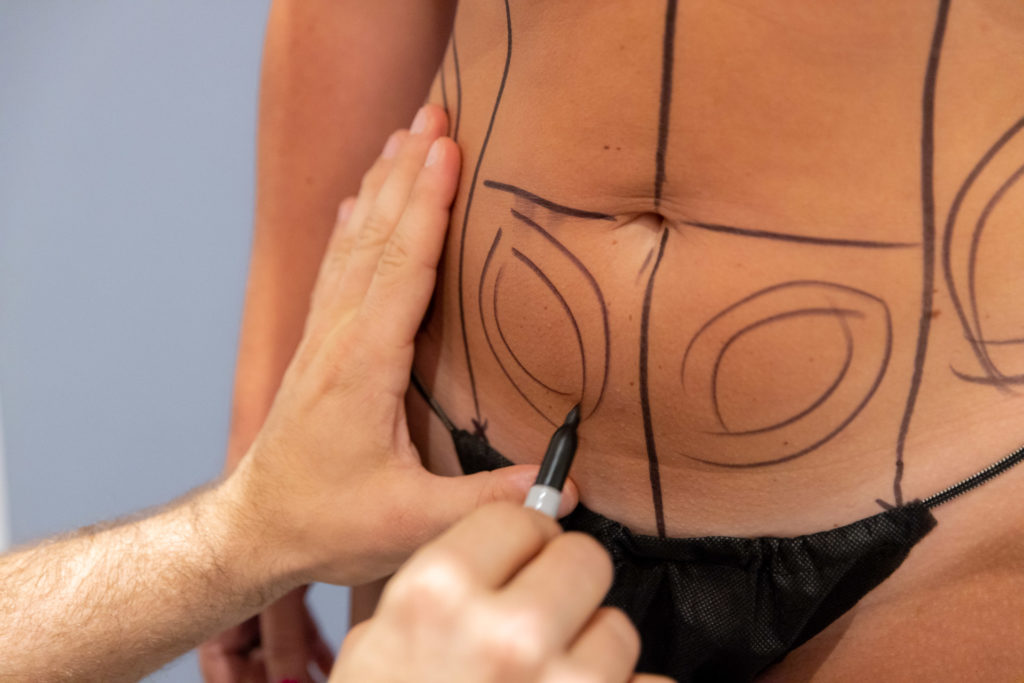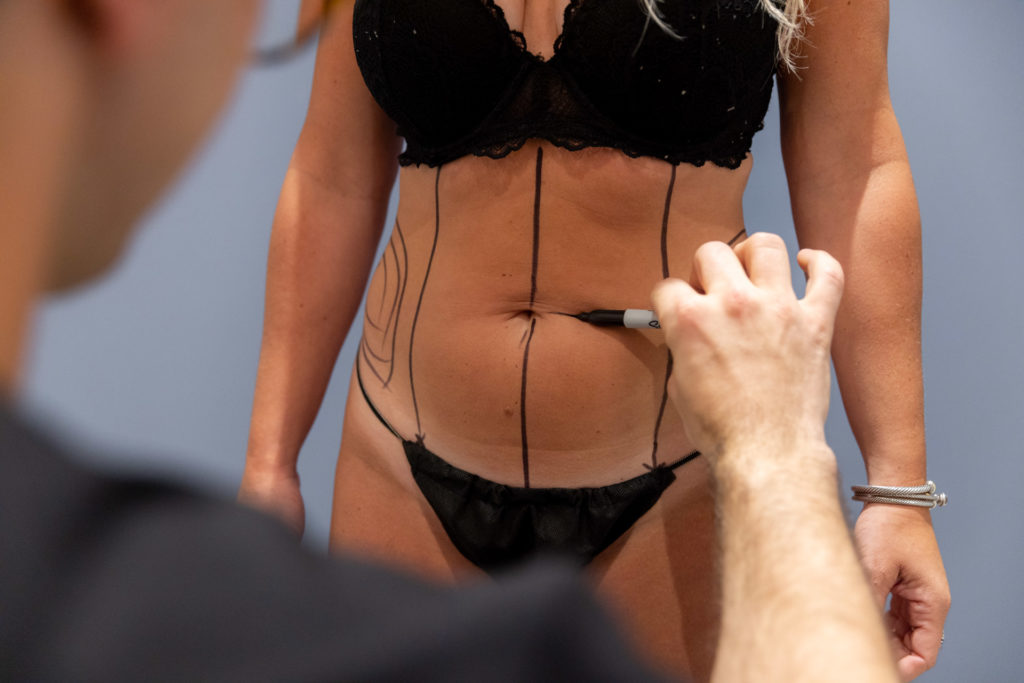
Welcome to Pearlman Aesthetic Surgery for liposuction in NYC on Park Avenue.
Excess fat can cause concern for men and women. Sometimes fat accumulates on parts of the body that are resistant to diet and exercise. No matter how much weight you lose, stubborn areas of unsightly fat may remain that can be addressed by liposuction.
Targeted weight loss surgery through liposuction in NYC is a fantastic option to permanently reduce fat in targeted areas. It’s one of the most popular cosmetic procedures in the United States.
Dr. Bassiri-Tehrani specializes in liposuction and helping patients achieve optimal results. It’s possible to remove fat from the stomach, hips, thighs, and more areas of the body. We can also remove fat from the facial and neck areas with neck liposuction.
A Slimmer, More Confident You
Many people have difficulty targeting certain areas of the body to reduce fat through traditional exercise and a healthy lifestyle.
Sometimes you carry more weight in thighs, arms, hips, or other zones because of genetics. It’s also possible for weight changes during pregnancy to leave residual stubborn fat.
Whatever your struggle, liposuction in NYC is the ultimate solution for long-term fat removal. Whether you want to get rid of fat in the stomach, arms, legs, or other treatable area, we provide personalized procedure plans for every patient.
Treatable Conditions
Excessive fatty tissue
Unwanted fat
Common Treatment Areas
Waist
Hips
Inner and outer thighs
Knees
Calves
Ankles
Abdomen
Arms
Chest
Under the chin; submental
The Benefits of Liposuction in NYC at Pearlman Aesthetic Surgery
Individualized consultation and treatment for your unique concerns and goals
Procedure takes place in our state-of-the-art OR at our Park Avenue office
Dr. Bassiri-Tehrani is board-certified by the American Board of Surgery and board eligible with the American Board of Plastic Surgery and completed a fellowship with the world-renowned Plastic Surgeon, Dr. Foad Nahai.
Dr. Bassiri-Tehrani holds a number of different honors, certifications, and professional memberships in the plastic surgery community
Dr. Bassiri-Tehrani’s ultimate goal as a plastic surgeon is to deliver personalized care that not only enhances his patients’ physical appearance but also improves their overall well-being

Surgery Process
How it Works
Consultation
Procedure
Next Steps
Recovery Timeline

When you schedule a consultation for liposuction in NYC, you’ll visit our Park Avenue office for a confidential consultation. During this conversation, Dr. Bassiri-Tehrani and our surgical team will get to know you and develop a personalized treatment plan; his priority is to provide individualized care for every patient.
Be prepared to discuss:
- Your surgical goals
- Your medical history
- Current medications
It’s possible to combine multiple surgeries based on your overall aesthetic goals. Many patients include liposuction and even facial rejuvenation as part of their mommy makeover in NYC.
After liposuction, some patients may experience loose skin, in which case we may recommend a skin tightening procedure, too.
We highly encourage you to ask questions during your consultation. Our team will walk you through each step of the procedure and recovery process so you can feel comfortable and confident in your decision.
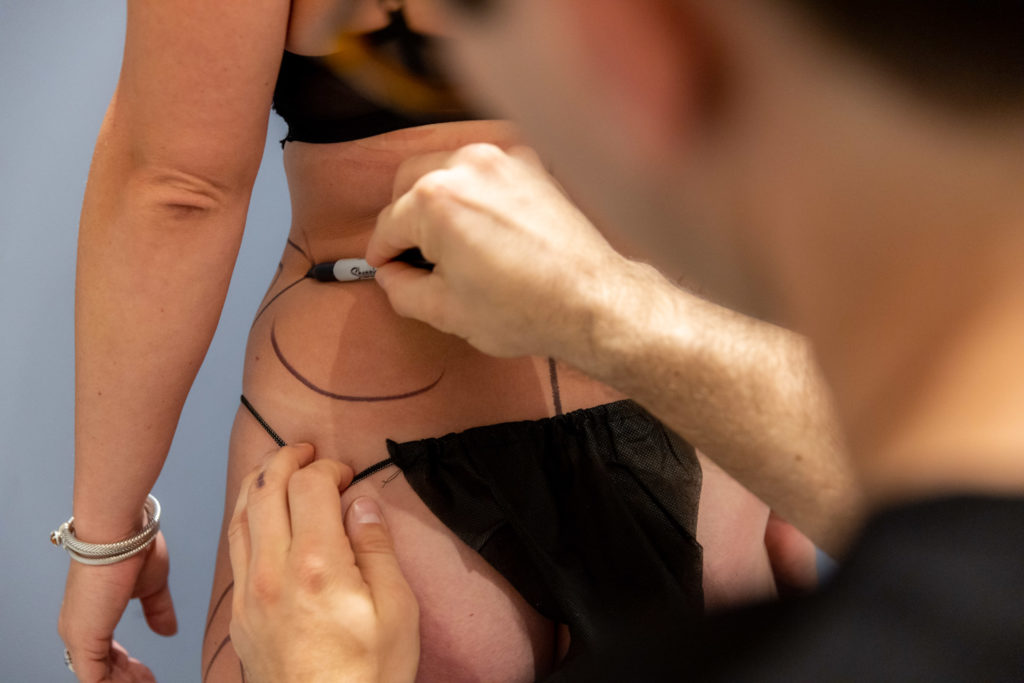
Your surgery will take place at our luxurious in-office facility in Manhattan, and the procedure can take up to 4 hours depending on the surgery areas.
Your surgeon will use very small incisions and insert the cannula into the liposuction area. With this cannula and Microaire PAL (Power Assisted Lipo), they will skillfully remove fat and sculpt the areas with excess fat.
We can combine liposuction in multiple areas based on your individualized treatment plan, adding additional procedures (like fat transfers, tummy tuck, breast surgery) Depending on your body and personal preference, awake liposuction can also be performed. Certain energy devices may be combined with liposuction for added skin tightening to help with the overall shape and long-term contour. This depends on your goals and body type.
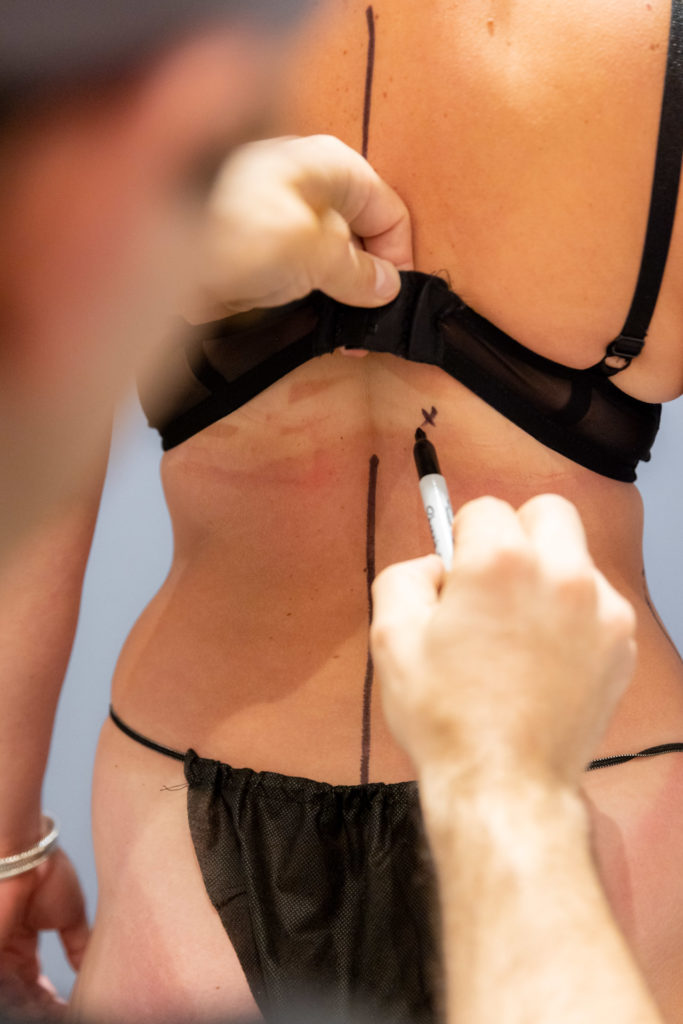
Liposuction is typically an outpatient procedure and you can return home the same day after your surgery. You will need someone to drive you home.
After your procedure, you will wear a compression garment. It’s important to wear this as instructed for proper healing and to help your body contour to its new shape.
Your initial recovery period is 4 to 7 days, and you cannot work out for the 3 weeks following your liposuction surgery. Dr. Bassiri-Tehrani may place drains at the surgical site to prevent fluid from building up. Our team will provide you with detailed aftercare instructions for optimal recovery.
Your surgeon, our Patient Care Coordinator, and the rest of our team will be there to guide and support you throughout your post-surgery care. We will schedule follow-up appointments to assess your recovery and results.
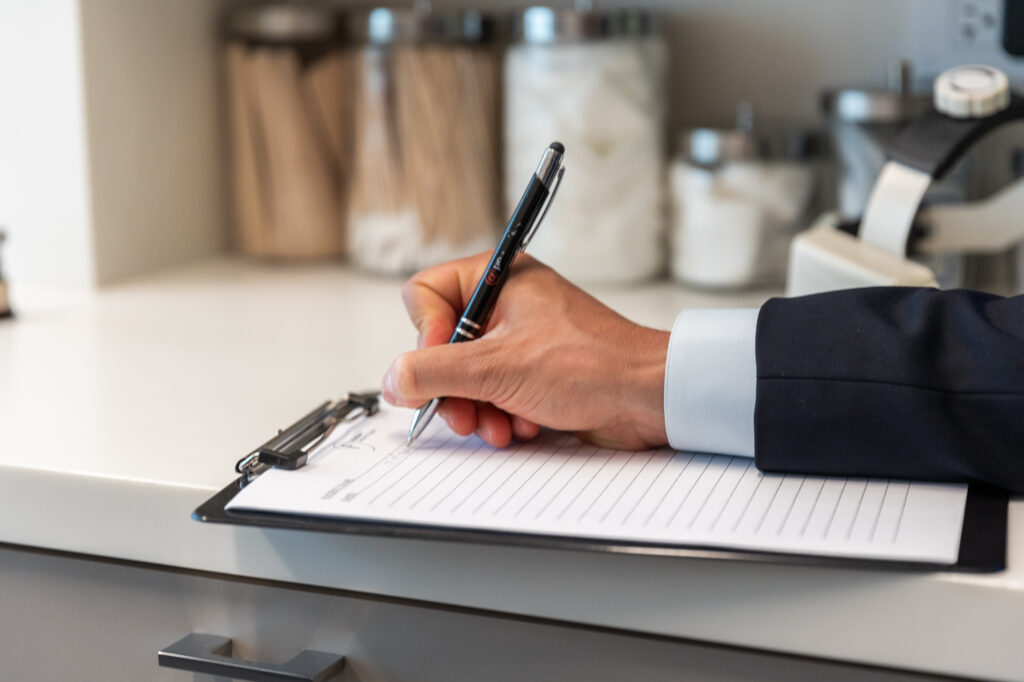
The First Few Days: You may experience some minor discomfort, swelling, and light draining from the incision. The pain is easily managed with Tylenol or prescription medications.
Weeks 1 to 2: You will still be wearing your compression garment. Most patients start to feel back to normal during this time. It’s possible to return to work if you don’t have a physically demanding job. You will notice some bruising and you will still be swollen from the surgery. This will gradually improve over the next couple of weeks.
Weeks 3 to 4: After one month you should be almost completely free of any soreness. There may still be some swelling present, but it will continue to go down.
Week 6 and beyond: You should be fully recovered and will be able to stop wearing your compression garment. All activity restrictions are lifted as long as you’re cleared by Dr. Bassiri-Tehrani.
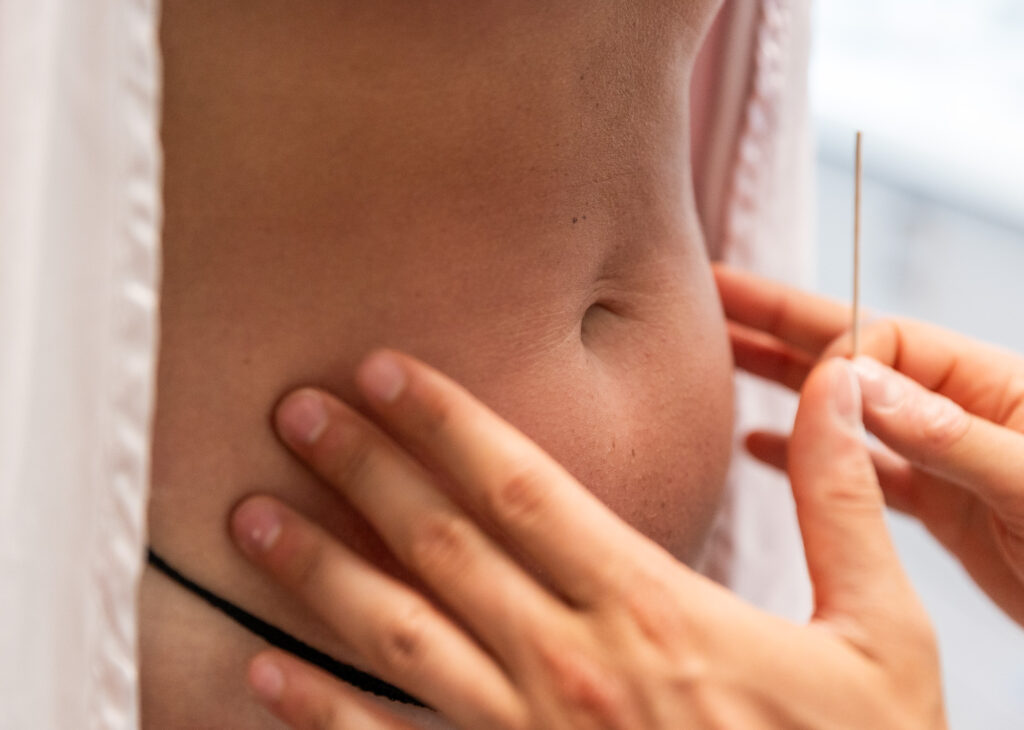
Why is some fat stubborn?
Select pockets of fat contain a different cellular makeup than others, which contributes to their difficulty to burn, making them feel “stubborn.” This is because these particular fat cells contain more alpha-2 receptors, which promote fat storage, than beta-2 receptors, which signal the release of fat for energy usage.
There are also different layers of fat—subcutaneous, visceral, and ectopic—stored in different locations for specific purposes, contributing to the cells’ composition and therefore responsiveness to diet and exercise. Visceral fat is contained in the organs, such as the liver, and is most sensitive to weight loss and active lifestyles. Subcutaneous fat is more stubborn and is harder to lose with diet and exercise.
Our renowned surgeons perform liposuction in NYC to precisely target those stubborn subcutaneous fat cells, permanently removing them. With a well-balanced diet and active lifestyle, these fat cells will not return, as long as the patient’s weight remains stable.
What Triggers Stubborn Fat
Genetics
Your genes play an important role in determining your body composition, how and where you store fat, as well as your appetite and metabolism. This means that genetic predispositions play a part in how easily you accumulate and burn fat.
For instance, the fat mass and obesity-associated (FTO) gene enhances fat cell production. The Kinase Suppressor of Ras 2 (KSR2) gene disrupts the cellular signals responsible for hunger and hinders your metabolism—the process of turning food into energy rather than storing it as fat. This can lower your basal metabolic rate (BMR), or the number of calories your body burns at rest.
Hormones
Your hormones also play a significant part in the accumulation and breakdown of fat cells, including stubborn fat. For example, your cortisol or “stress hormone” levels can trigger intense sugar cravings, promoting stubborn fat storage in your abdomen.
The female sex hormone, estrogen, causes women to store more fat in their hips and buttocks than men do. However, when these levels decline after childbirth or menopause, your body redistributes those fat cells to other areas, such as the abdomen. Beyond regulating your blood sugar, insulin hormones can also trigger fat storage in the abdominal area, making them more stubborn the longer your insulin levels are “spiked.”
Age
Many changes come with age, and beyond mobility and physical activity limitations, you may also experience a slower metabolism, forcing your body to hold on to fat as an emergency energy source. Men’s and women’s sex hormones, estrogen and testosterone, decline with age, triggering visceral fat accumulation. Visceral fat is your internal organ fat and can not be removed with liposuction, but only reduced through diet and exercise.
Our surgeons don’t reserve liposuction in NYC for a specific age group, but our advanced techniques are effective for mature patients struggling with changes in their body composition. By removing those fat deposits, we can help you reclaim your youthful contours.

Fat Grafting With Liposuction
We recognize that while you may want to remove fat in some areas, you may want to add it to others to accentuate and balance your natural features. Fat grafting is an advanced, multi-step procedure that uses liposuction to extract fat from a specific region and place it in another through precise injections.
This uniquely biocompatible solution restores lost volume to the face and body for results that look and feel natural, as it requires no foreign objects or substances. As a highly personalized, dualistic approach to liposuction in NYC, fat grafting grants you the power to enhance and sculpt your physique.
Treatable Conditions
Volume Loss
Sunken or “hollow” features
Common Treatment Areas
Breasts
Buttocks
Cheeks
Hands
Hips
Temples
Under-eyes
Benefits of Fat Grafting
Dr. Brian Bassiri-Tehrani specializes in liposuction, breast augmentation, and mommy makeovers, offering the proven dynamic expertise that personalized fat transfers require.
The Key Advantages
Fat grafting, otherwise known as fat transferring or lipomodeling, solely uses your own tissue, minimizing the risks of allergic reactions and eliminating the potential for implant-related illnesses. This biocompatible technique simply moves fat cells from one area to another, seamlessly integrating with the existing tissue.
Our surgeons are dedicated to enhancing your natural beauty, not overpowering it. Fat grafting offers harmonious results that build on your frame to fit your natural facial or body proportions, for a physique that is uniquely and entirely your own. It also imparts a more youthful skin texture and revives a healthy glow.
Once your body absorbs the new fat, the area will feel natural—maintaining your sensations and feeling “normal” to the touch. Unlike implants, the area won’t feel overly firm, nor will you be able to detect where the treated area begins and ends.
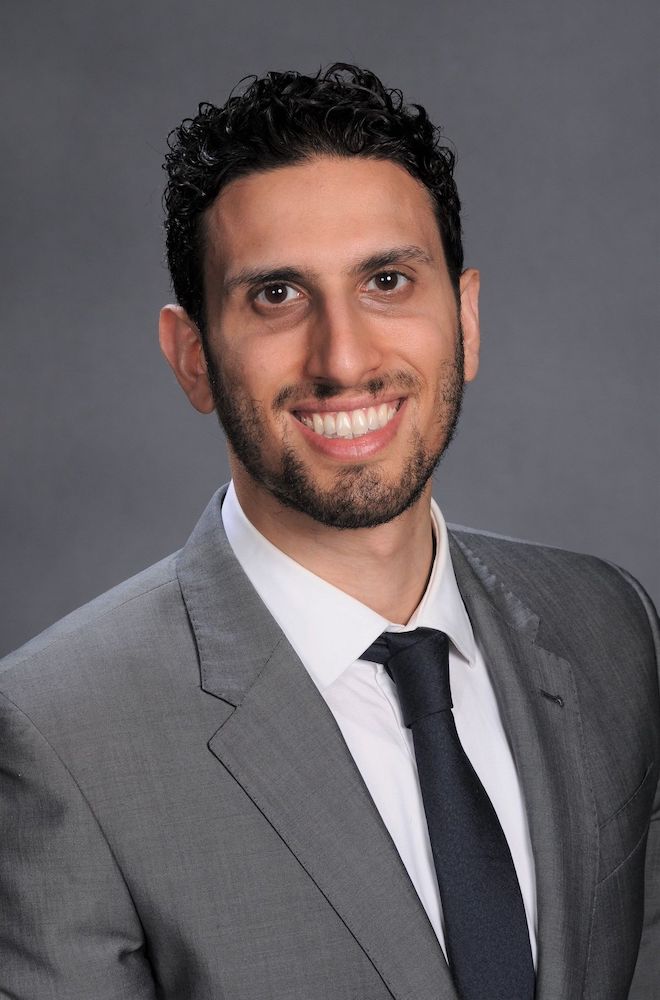
Expertise You Can Depend On
As Dr. Bassiri-Tehrani says, “Beauty is in the eye of the beholder,” and here, you can unlock your inner beauty on your terms.
Born and raised in New York, Dr. Brian Bassiri-Tehrani’s passion for medicine and aesthetics is changing lives. Specializing in liposuction in NYC, Dr. Bassiri-Tehrani empowers patients to step into the best version of themselves—whatever that means to them—with the most innovative, effective techniques.
At Pearlman Aesthetic Surgery, our surgeons lead the leaders. Dr. Bassiri-Tehrani’s active involvement in academic research and education is helping us raise the bar not only for our patients, but for surgeons everywhere.
Fat Transfers for the Face
Cheeks
It’s natural for your cheeks to lose volume with age, gradually shifting from a plumper “baby face” to a slimmer, more mature profile. However, as the aging process continues, your cheeks’ underlying fat pads and muscles deteriorate, which can leave the area “sunken.” A cheek fat graft restores natural fat to redefine your cheekbones and your features, replenishing youthful balance.
Temples
The small, flat areas on the sides of our forehead also lose volume with age. Despite the temples’ small size, they play a big role in framing your face, as fuller temples provide a more youthful, oval-shaped frame, and sunken temples create a harsher frame that can take away from your other youthful features. A fat transfer to the temples smoothes the transition between your forehead and cheekbones to reframe your face, offering subtle yet transformative results.
Under-Eyes
Your eye sockets are more delicate than other areas, and as this thin skin loses elastin and collagen with time, it loses volume and creates the appearance of under-eye “bags.” A precise fat transfer to the under-eyes balances this delicate area, allowing light to reflect off of it evenly to reduce dark circles and provide an overall refreshed and awake appearance.
Fat Transfers for the Body
Breast
For individuals looking to increase the volume of their breasts without implants, a fat transfer is a seamless solution. While maintaining the natural teardrop shape of the breasts, we restore fullness and firmness to the breasts, increasing them by 1 to 2 cup sizes, without the downtime, upkeep, or illness risks of breast augmentation with implants.
Buttocks
Patients seeking a rounder, fuller buttocks are no longer confined to butt implants as a sole solution. Our surgeons use advanced liposuction in New York City to perform a fat transfer Brazilian butt lift (BBL) for results that look and feel natural, rather than overpowering your frame. A fat graft can also even out hip dips, the indentations on the sides of the buttocks.
Hands
We use our hands every day and expose them to harsh elements such as the sun, expediting the skin aging process. Aging hands can occur prematurely, appearing as bony and frail. Fat injections are a natural, lasting solution that restores lost volume to smooth the back of your hands without the same maintenance or risks as dermal fillers.
Surgery Process
How It Works
Consultation
Fat Harvesting
Fat Injections
Next Steps

First, you’ll meet with your surgeon to discuss your aesthetic goals, lifestyle, budget, and medical history openly and honestly. During your consultation, Dr. Bassiri-Tehrani will help you determine if fat grafting is your best solution and work with you to create your personalized plan.
Fat transfers are highly individualized, requiring your surgeon to go beyond general anatomical expertise to understand your unique anatomy and know how to safely and effectively accomplish your goals. After assessing the donor site and the area you wish to increase volume in, we’ll provide a detailed cost estimate before scheduling your procedure.
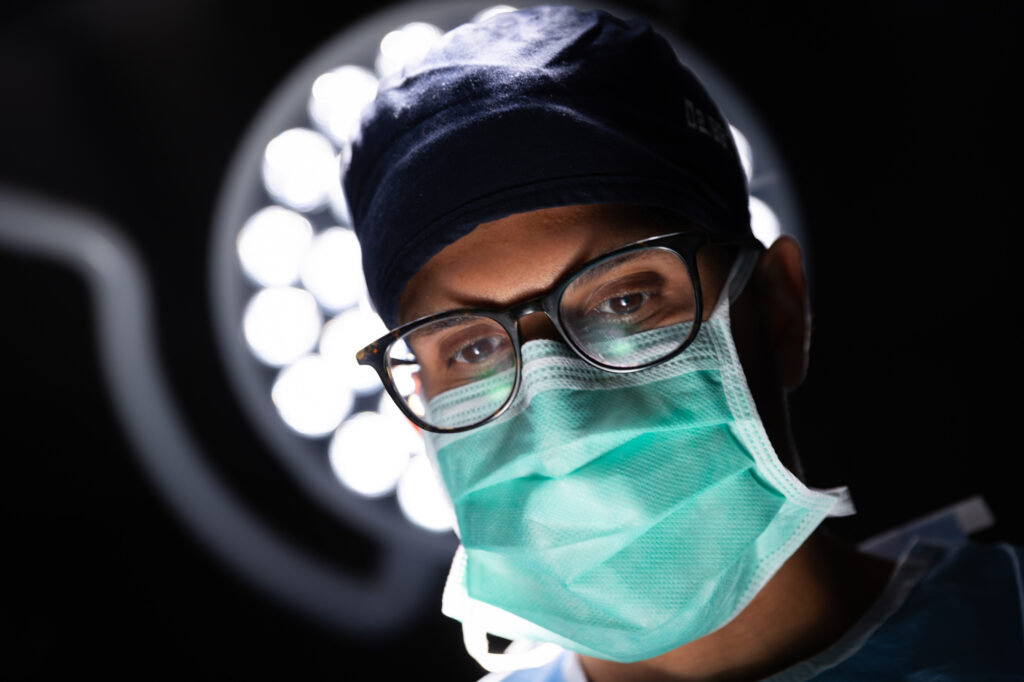
When you arrive for your surgery, taking place in the same upscale Manhattan facility where our surgeons perform liposuction in NYC, we’ll review the process again before helping you get comfortable. Then, we’ll administer general anesthesia and create a small incision at the donor site to insert the liposuction cannula.
Unlike traditional liposuction, we use a lower liposuction intensity for fat transfers, allowing the fat cells to slowly fill the canister. This setting allows us to maintain the fat cells’ structural integrity and optimal consistency, maximizing the effectiveness of injections. Once we’ve collected the fat, we’ll carefully process it to remove impurities, such as blood and anesthesia residue, to prepare it for injections.
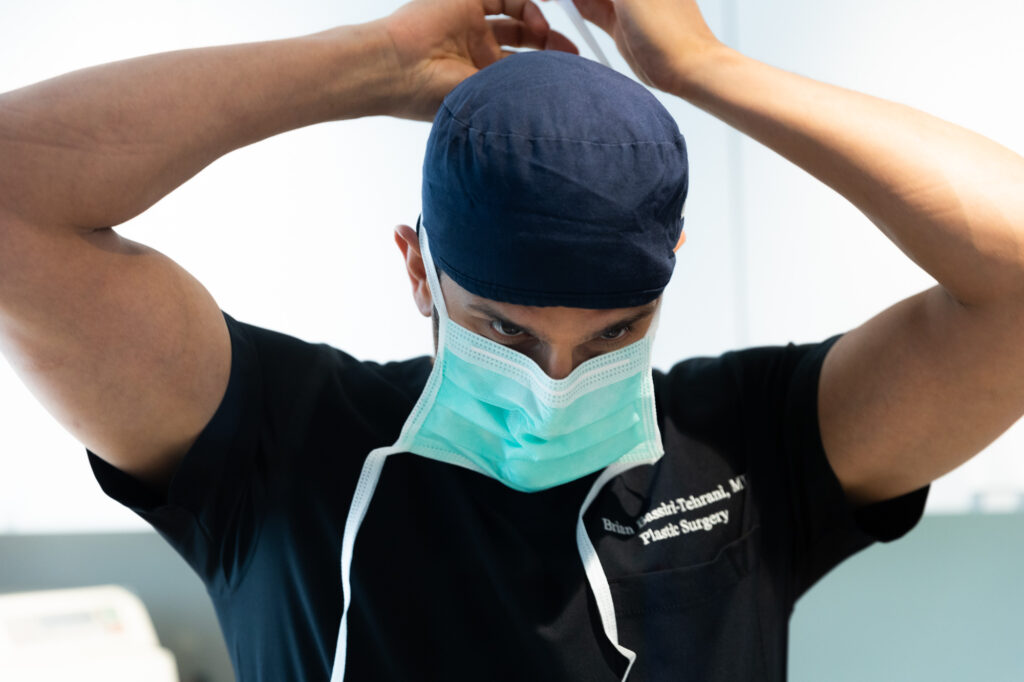
Next, your surgeon will use a syringe to inject the processed cells into specific regions of the area you wish to treat, ensuring even distribution from every angle. Keep in mind that, in some cases, your treatment plan may include multiple rounds of fat grafting to achieve your desired results. After your injections, we’ll provide a list of detailed aftercare instructions and remind you of your follow-up appointment.
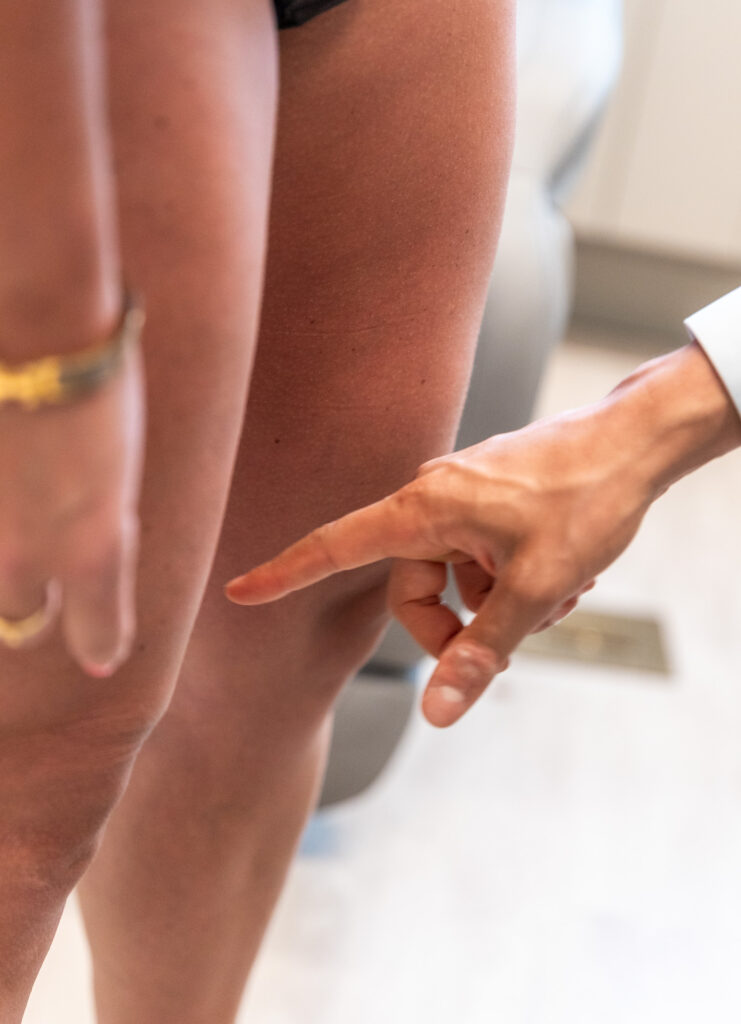
Patients trust our surgeons for liposuction in NYC because our advanced techniques offer incredible, natural-looking results safely and effectively. While recovery is minimal compared to implant insertion procedures, following our guidelines is still important to ensure a smooth, comfortable recovery.
It’s important to wear compression garments around the clock as directed and avoid heavy lifting for a minimum of 2 weeks to allow your incisions to heal. Remember to prioritize rest and to sleep with the treated area elevated, which can reduce swelling. Full recovery may take up to 6 weeks, but your timeline may vary depending on the size and location of your fat transfer.
Frequently Asked Questions
Liposuction
Can I combine a breast fat transfer with a breast lift?
Absolutely. Depending on your goals, we may recommend pairing these two procedures, as a breast fat transfer restores volume, while a breast lift restores the breasts and nipples to their original, youthful positions. Combining these surgeries offers more natural-looking, comprehensive results for patients struggling with ptosis, or sagging, and a decrease in breast size, which often occur simultaneously due to hormonal changes and aging.
Can I combine liposuction with other procedures?
Yes! Patients frequently combine liposuction with other aesthetic procedures. Liposuction is often included as part of a mommy makeover. It can also be combined with fat transfers so that the fat that is removed can be used immediately to be transferred to certain areas to augment and improve shape and contour.
Does liposuction require a hospital stay?
Generally, liposuction doesn’t require a hospital stay. However, if we are combining multiple surgeries, it may be preferred. We’ll discuss this during your consultation.
Does skin tighten after liposuction?
Yes, skin tightens after liposuction, and even more so when we use the BodyTite radiofrequency assisted skin tightening technique.
How do I decide between breast implants and a breast fat graft?
While neither implants nor fat grafts are a universally more effective form of breast augmentation, Dr. Bassiri-Tehrani will help you determine which is most suitable for you during your consultation. Here, we’ll discuss your needs and goals, as each technique requires different levels of aftercare and maintenance and provides different results.
Typically, an augmentation with implants is more ideal for individuals looking to significantly increase the size of their breasts and enhance their upper cleavage. Those seeking less dramatic changes to their breasts’ size—maintaining a natural shape and feel—may be better suited for a fat transfer augmentation with liposuction in NYC. We’ll also consider your lifestyle, budget, and medical history when helping you make your decision, keeping in mind that implants require replacement every 10 to 15 years to avoid potential health complications.
How do weight fluctuations impact a fat graft?
Fat grafting involves relocating living, metabolically active fat cells, which carry the epigenetic imprints of your body’s history. However, significant weight fluctuations after the procedure can impact the survival and behavior of the transferred fat, as these cells respond dynamically to changes in your body, emphasizing the importance of maintaining a stable, healthy lifestyle for lasting results.
For example, if significant weight is gained after a fat transfer procedure, the transferred fat cells will grow in size. Conversely, if significant weight is lost after a fat transfer procedure, the transferred fat will shrink. That is why it is imperative to be at your ideal weight for at least 3 months before your procedure for optimal fat grafting results.
How long do liposuction results last?
Depending on your health and lifestyle choices, liposuction results can last permanently. The fat cells we remove with liposuction cannot come back, but the remaining fat cells can expand from weight gain.
How much does liposuction cost in NYC?
Liposuction in NYC costs $5,000 – $15,000 depending on the treatment areas.
Is liposuction a solution for men and women?
Yes. Dr. Brian Bassiri-Tehrani performs liposuction in NYC on men and women of all ages. We recognize that aside from the differences in male and female anatomy, men and women also have different goals for liposuction. We take the time to understand your unique anatomy and vision, so we can help you enhance your feminine or masculine features in a manner that suits your physique.
What is epigenetics?
A newer concept of epigenetics is changing the landscape of genetics, which plays a role in determining your weight and how your body creates, stores, and burns fat cells. Epigenetics is a concept of how external factors like lifestyle and environment influence the expression of our genes without altering DNA itself. This emerging science offers a fascinating perspective on how fat cells behave and adapt, even in the context of liposuction. When it comes to fat cells, this science reveals that they are not merely storage units for excess calories but dynamic, metabolically active players shaped by both genetics and external factors.
In the context of liposuction, epigenetics can help us understand the body’s response to fat removal. While liposuction permanently removes fat cells from targeted areas, the cells that remain—and those in untreated areas—retain epigenetic “memories” of your body’s metabolic history. Factors such as diet, stress, and activity level influence how these remaining cells behave, potentially affecting how and where your body might store fat in the future. This may lead to some patients wrongly thinking that “the fat just returned in other places” after liposuction.
For those considering liposuction, understanding epigenetics underscores the importance of maintaining a healthy lifestyle post-procedure. Liposuction is transformative, but its long-term results are optimized when paired with habits that reinforce your body’s epigenetic signals for a leaner, healthier profile. This means that the journey doesn’t end in the operating room; it’s a collaborative process between advanced surgical techniques and your commitment to your body’s well-being. You can’t choose the genes you inherit, but epigenetics proves you have the power to shape how they’re expressed.
Which is better, tummy tuck or liposuction?
Whether tummy tuck or liposuction is better depends on your specific anatomy. If you have excess skin and rectus diastasis, a tummy tuck will better address your concerns. If you have good skin quality with minimal excess skin and are troubled by stubborn fat that does not respond to exercise, liposuction is better suited for you. You can find the best procedure for you with a one-on-one consultation.
Why do I need to wear a compression garment after liposuction?
A compression garment keeps pressure on the treated area to expedite the natural healing process. It’s important to wear the proper garments as directed, typically around the clock for the first 4 weeks after surgery, to reduce swelling and bruising. This pressure improves circulation to the area and helps manage discomfort while keeping the area’s contours smooth.
Why do some fat cells not “take” after a fat transfer?
Not all of the fat cells taken from the donor site survive in their new location once you’ve healed from injections, as your body’s natural inflammatory response may damage the cells. This varies by person, as your genetics and overall health determine the severity of this response.
At Pearlman Aesthetic Surgery, our surgeons use a closed-system technique for liposuction in NYC, removing fat cells more gently. This slower setting helps keep fat cells intact, minimizing cellular damage to maximize the chances that they survive long-term. Keep in mind that the healing process takes a few weeks, so you may notice less volume than what was present immediately after receiving injections.

Persistent in the Pursuit of Perfection
For years, Pearlman Aesthetic Surgery has been persistent in our search for perfection as the best plastic surgeons in New York. We bring evolution, experience, expertise, and uniqueness to our liposuction patients in our Manhattan office. The goal of Pearlman Aesthetic Surgery is to help patients to actualize their ideal self-image for the highest level of personal authenticity and attractiveness possible. Our surgeons couple an attentive bedside manner with genuine concern for their patients’ welfare to deliver the best liposuction results possible.

Try out an instant consultation.
Designed by our plastic surgeons, our procedure match tool will give you more insight into the possibilities for liposuction in NYC at Pearlman Aesthetic Surgery.
Request Appointment
Hours
Monday
9 am – 5 pm
Tuesday
9 am – 5 pm
Wednesday
10 am – 6 pm
Thursday
9 am – 5 pm
Friday
9 am – 5 pm
Sat - Sun
closed
Further Your Results
No two patients are the same with aesthetic surgery. Our patients commonly pair the following procedures with a liposuction in NYC:



